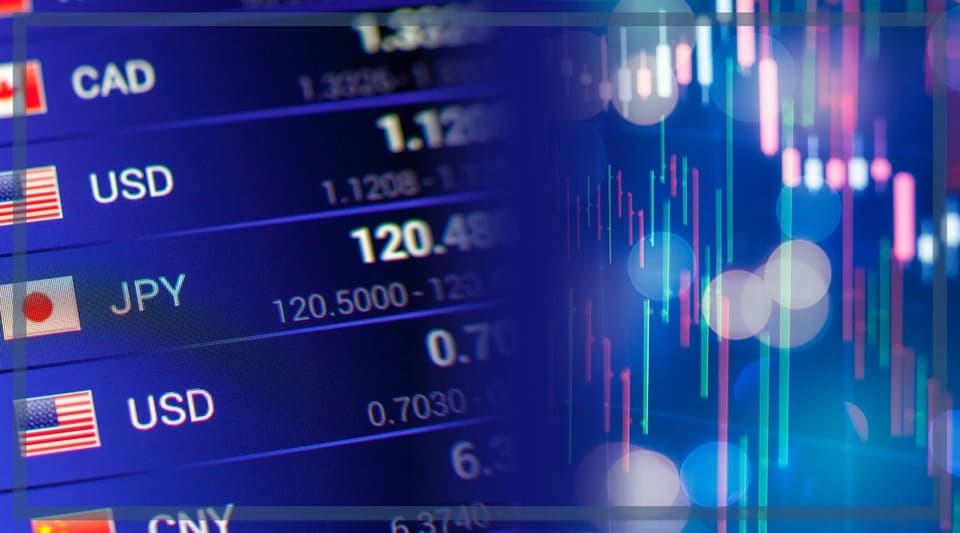Interest rates may be set to rise in Japan amidst continued global uncertainty. The Bank of Japan ended its stimulus policy last March. Since then, interest rates have already increased to 0.5% in January. Amazingly, 0.5% is the highest the interest rate has been in Japan for 17 years. And it may still go up further.
The Deputy Governor of the Bank of Japan, Ryozo Himino, shared this week how the central bank should keep raising interest rates. He also warned that global economic uncertainty remains high.
Much of the uncertainty is due to U.S. tariffs and their eventual impact. There are also problems with weak economic growth and inflation.
Is Japan Worried About Inflation?
In July headline inflation in Japan dropped to 3.1%. It was hoped that it would drop to 3%. This reduction is in line with the Bank of Japan’s target 2% inflation rate, which has eluded economists at the central bank for over 2 years now.
Japan’s pace of inflation was the highest among the G7 until June this year. However, the UK’s inflation shot up to 3.8% in July, overtaking Japan as the highest in the G7 in July. Canada’s inflation was 1.7%, the U.S. stood at 2.7%, France is at 0.9%, Italy is at 1.7%, and finally Germany’s inflation was 2.2%.
The BOJ aims to reach a neutral rate of 1% – 1.5% by 2026, but BoJ Governor Kazuo Ueda has emphasized gradual hikes to avoid harming consumption.
One of the underlying reasons for this prolonged inflationary challenge in Japan is rising food prices, especially rice.
How Commodities Affect the Value of the Yen
Rice is one of the most popular commodities in Japan. It may have dropped in popularity in recent years; however many Japanese still eat rice daily and rice remains fundamental to Japan’s national food security. Unusually, 2025 has seen a rise in rice imports by Japan,
Around 10 percent of rice used in Japan is imported. Of that, about 60 percent was from the U.S. in the last year. But that hasn’t stopped the U.S. from criticizing Japan’s rice import and distribution system calling it “highly regulated and nontransparent”. This is happening at a time when Japan is increasing rice imports on the back of domestic rice prices doubling in the past year.
Rice is important as it has been a primary driver of inflation so far in 2025. As the price of rice has doubled, confidence in the Japanese government has ebbed. In July, Prime Minister Shigeru Ishiba and his ruling coalition lost majorities in both chambers of parliament. This election catastrophe for the Prime Minister has been blamed on rising food prices, like rice.
Rising food prices, including a 100% increase in rice in 2025, have driven inflation alongside energy costs, contributing to public discontent and the ruling coalition’s election losses in July 2025.
Political uncertainty following the July 2025 election losses weakened the Yen from 148.5 to 146. Investors watching currency markets often compare how different economies respond to similar inflation and interest rate changes, which can highlight trends when checking platforms listing the best forex brokers for global currency exposure. Understanding these patterns can help analysts anticipate potential shifts in the Yen and other major currencies, offering a clearer picture of the global economic landscape.
Japan will handle US demands to buy more American rice within the confines of its existing overall cap on duty-free imports and has no plans to lower its tariffs on farm products https://t.co/JjXmrZom0f
— Bloomberg (@business) September 2, 2025
What About the Trump Effect?
The Yen strengthened from 157 to 148 against the USD in 2025, partly due to BOJ rate hikes and suspected interventions in April and July 2024. U.S. President Donald Trump has criticized Japan for intentionally maintaining a weak yen in the past. But his concern is also to address the trade deficit.
Japan’s interventions in April and July 2024 briefly strengthened the yen, but sustained appreciation depends on BOJ policy and global factors. Japanese authorities spent trillions of yen on foreign currencies at the time, which may have influenced Trump’s comments. Japan has repeatedly denied claims of currency manipulation.
According to the Observatory of Economic Complexity or OEC in June 2025, the U.S. exported $6.79 billion and imported $12 billion from Japan. Between June 2024 and June 2025 the exports of U.S. decreased by 10% while imports from Japan increased by 2.63%. Cars are still the biggest single import the U.S. makes from Japan.
An interesting thing to note is how in June 2025 Japan’s exports to the U.S. were 11.4% less than in June 2024. Importantly, over the past 5 years, trade has grown at an annualized rate of 18.7%.
China is still Japan’s largest importer, making up almost double of all U.S. imports. At the same time exports to the U.S. are still more than those to China. However, if you include Hong Kong, China would be the largest export destination for Japanese products.
This may seem encouraging for the future, but there is a deeper issue. In July, Japanese exports logged the biggest drop in more than four years. This was exacerbated by a drop in car exports to the U.S. as well as weaker demand from other key markets like China and Europe.
Japanese Government Bonds
As the Japanese economy continues to grapple with inflation, the added pressure of falling exports is highlighting its fragility. The situation has influenced confidence in Japanese government bonds. The yen is traditionally known as a safe haven, but just this week three Japanese megabanks increased their holdings of foreign bonds, including U.S. treasuries.
While interest rates are going up in Japan, they are likely to drop in the U.S. This year Japan 10 -Year Bond Yields have shot up from 1.08% to 1.60% – their highest level since July 2008. At the same time U.S. 10-Year Bond Yields have declined from 4.57% to 4.21%.
The next interest rate hike, or lack of it, is what the megabanks are keeping an eye on. Data will be available on October 30. In the meantime, central banks across the world are learning about “bond vigilantes” who sell off sovereign bonds in times of stress. Recent bond market activity suggests that these vigilantes are very active. The ousting of UK Prime Minister Liz Truss in late 2022 may have been a warning call to politicians and policymakers across the world.
Real GDP Growth
The other challenge is real GDP growth which the Bank of Japan predicts will be between +0.5% and +0.7% in 2025. 2026 predictions are +0.7% to +0.9%.
The U.S economy is growing much quicker. Quarter 1 2025 may have seen the economy contract by 0.5%, but Quarter 2 saw 3.3% growth according to the Bureau of Economic Analysis.
In June the Federal Reserve projected 1.4% growth for 2025 and 1.6% growth for 2026.
The IMF projects 0.6% growth in 2025 for Japan, and 1.8% for the U.S.
Additionally, Japan’s high public debt (249.67% of GDP according to the IMF) and aging population limit fiscal flexibility, potentially capping Yen gains.
Can the Japanese Yen Strengthen Against the Dollar?
J.P. Morgan published a report called ‘Will the US dollar regain its strength’ in July, 2025. The report discusses the outlook for the Japanese yen, suggesting that it will end the year at 140. Followed by a fall to 139 in March 2026.
U.S. tariffs (15%) threaten Japan’s export-driven economy, though J.P. Morgan argues high local production mitigates risks. However, a 17% GDP reliance on exports suggests vulnerability (2024 figure).
UBS predicted in March that the Yen would strengthen toward 145 by year-end and 142 by March 2026.
Outlook for Yen Strength in 2026
BOJ Rate Hikes: Gradual increases to 1% – 1.25% by mid-2026 will narrow the U.S. – Japan rate differential, supporting the yen. Inflation easing toward 2% reduces pressure for aggressive hikes but maintains a hawkish BOJ stance.
Watch out for the continued strengthening of the U.S. economy compared to slow growth in Japan. Add to this how Japan is only managing its public debt and isn’t trying to reduce it like we saw with Elon Musk in the U.S. this year.
Finally, the yen’s safe-haven status could drive appreciation if geopolitical risks, like U.S.-China tensions, escalate in 2026
Author: Andy Samu
#Japan #JapaneseYen #SafeHaven #Predictions #Tariffs #Inflation #JPYUSD #USDJPY #Bonds #Rice
Stock prices and currency specifics are taken from leading trading platform TradingView and CMC Markets.
The editorial team at #DisruptionBanking has taken all precautions to ensure that no persons or organizations have been adversely affected or offered any sort of financial advice in this article. This article is most definitely not financial advice.
See Also:
How Strong Will The Japanese Yen (JPY) Be In 2025? | Disruption Banking
Japanese Yen (JPY) Hits Lowest Level Since 1986 | Disruption Banking
Is The Japanese Yen (JPY) Being Weakened To Attack China? | Disruption Banking
Will Trump’s Liberation Day Cause a Stock Market Crash? | Disruption Banking
Who are the Disruptors Affecting Fed Decisions? | Disruption Banking














